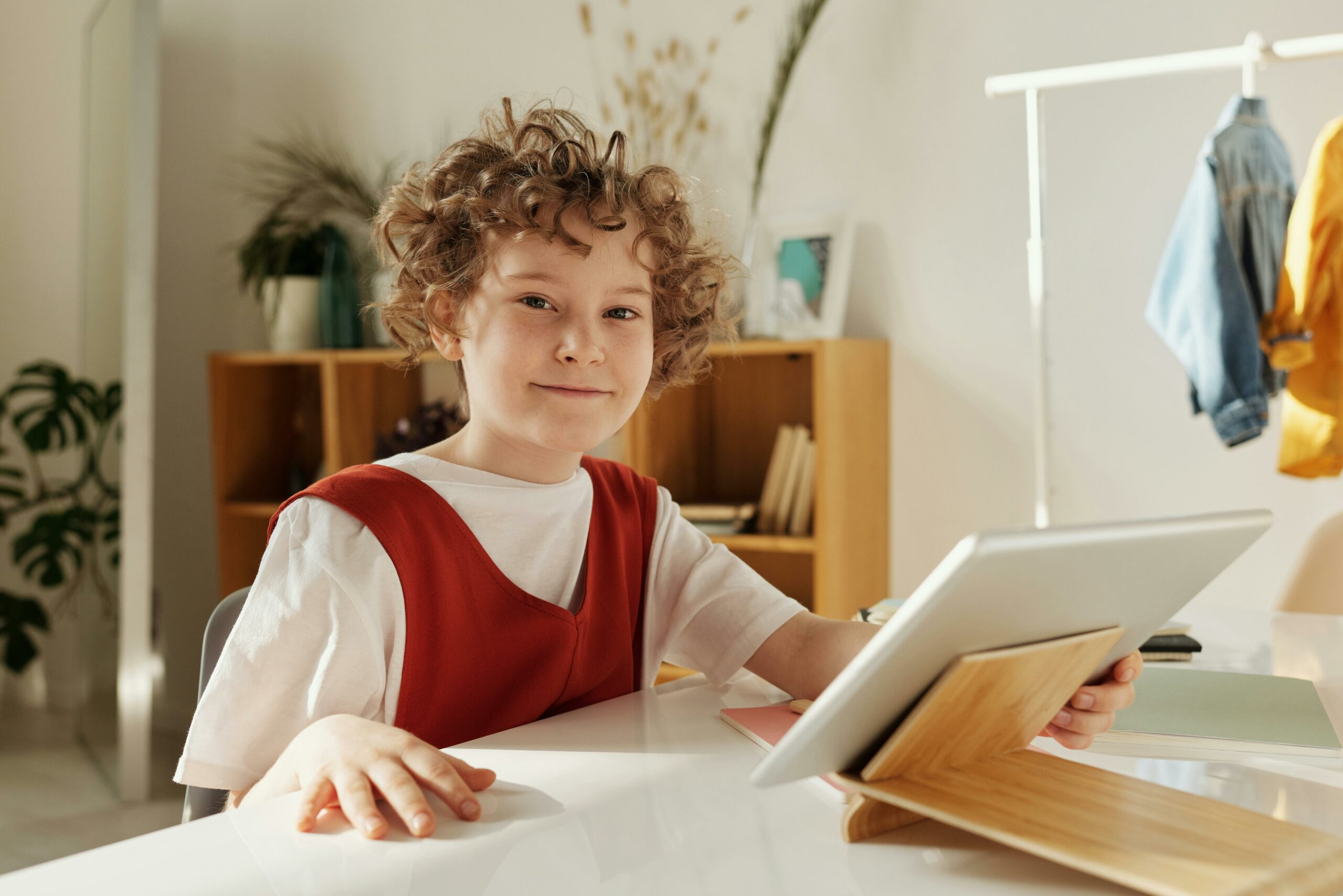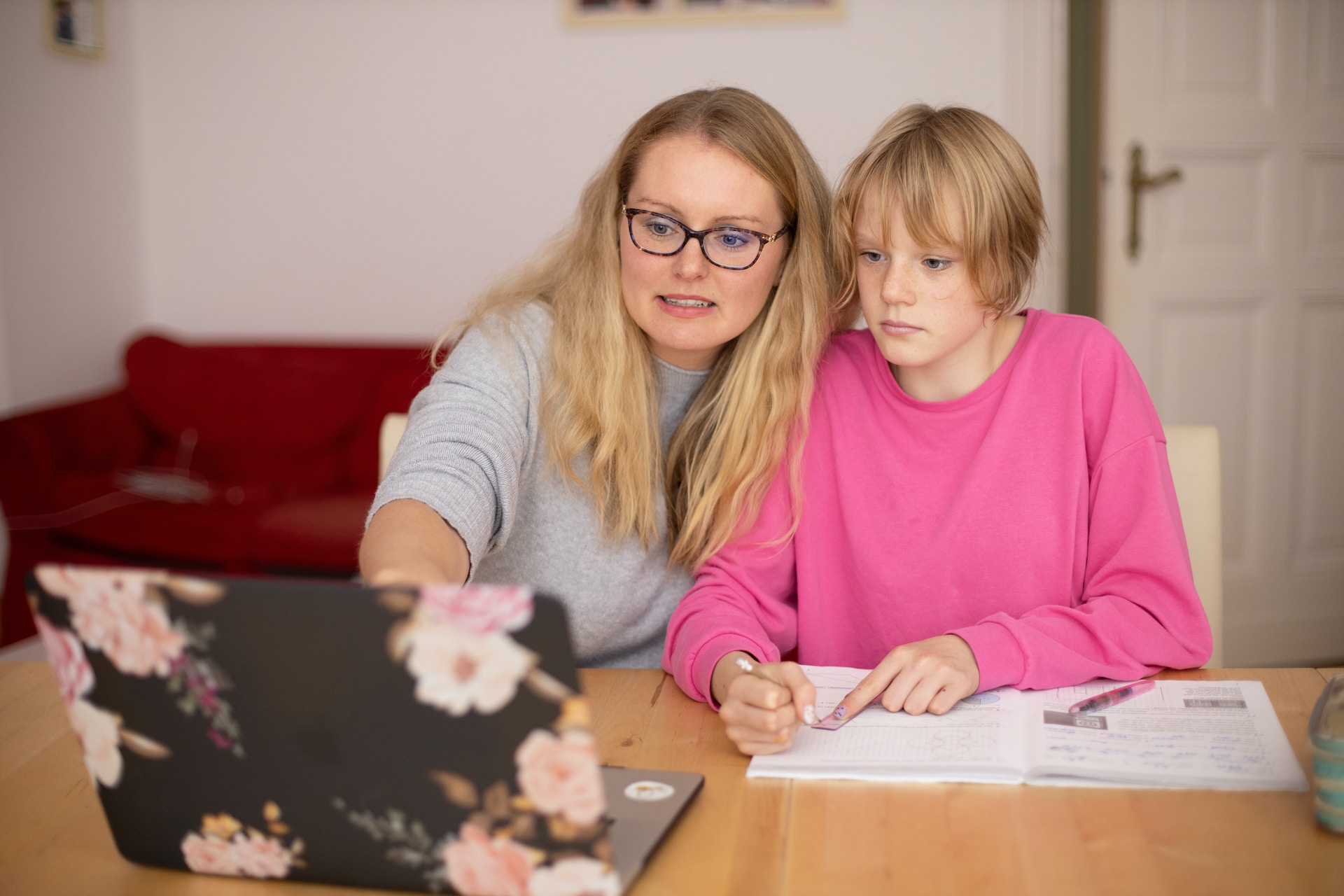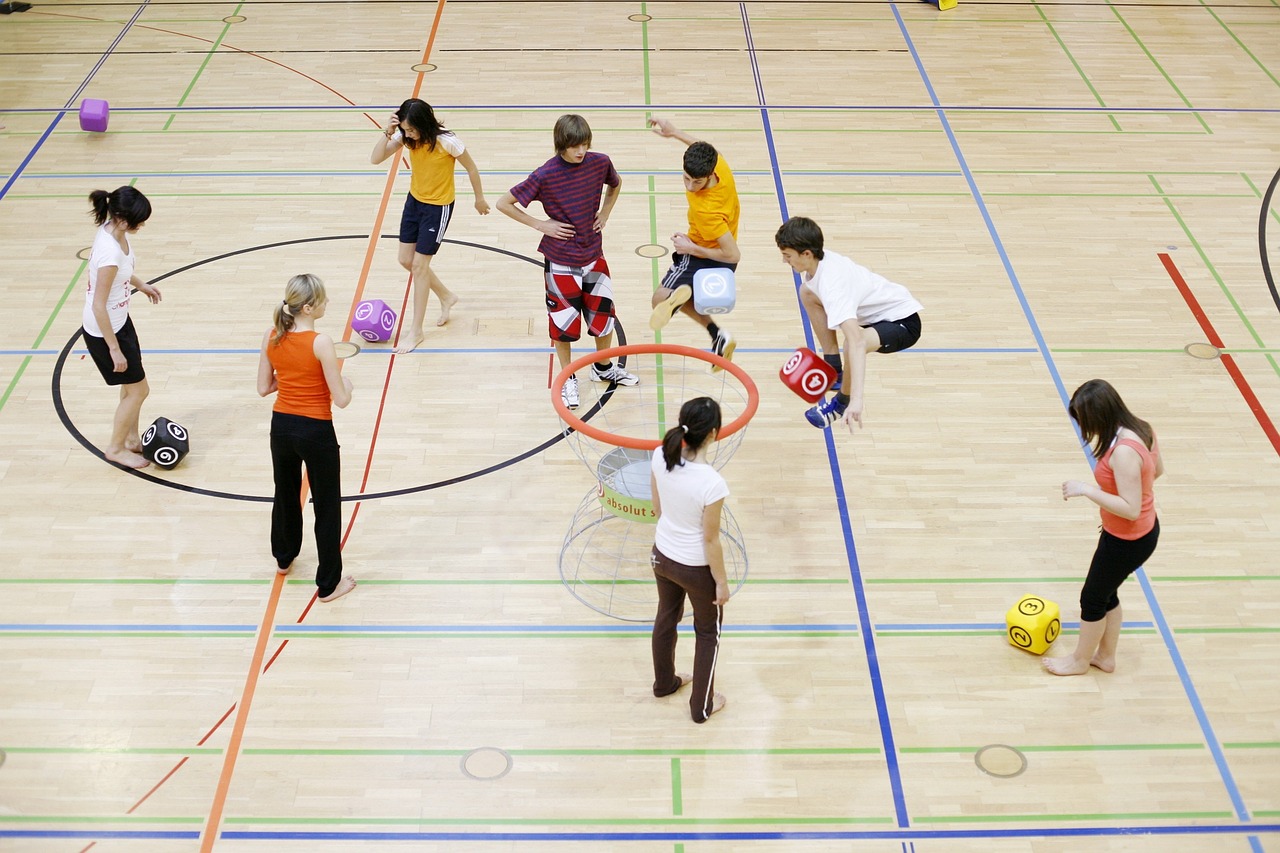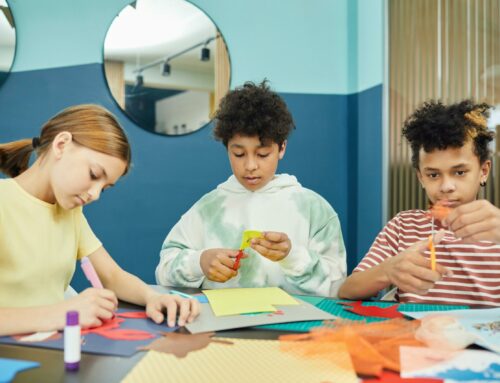It is crucial to know how to create a positive learning environment at home now that shifting education trends have made the home a pivotal learning hub. As many parents are now seeking ways to make their homes conducive to education, this guide is designed to help you navigate this challenge. We’ll start by exploring how to personalize your child’s learning space to suit their individual needs. Then, we’ll examine effective spatial design, including the benefits of incorporating natural elements. We’ll also discuss the importance of organizational habits, collaborative learning, and nurturing a growth mindset. Finally, we’ll address the crucial role of emotional well-being in creating a supportive home learning atmosphere. Join us as we journey through the steps to transform your home into a space that is both educational and joyfully enriching.
Understand Your Child’s Needs
To truly create a tailored and effective learning environment at home, it’s crucial to understand your child’s unique study habits and interests. Here are some tips to help you better cater to your child’s needs:
- Personalize decor: Incorporate elements into your kid’s study nook that resonate with their preferences. This might include using their favorite colors, decorating with inspirational posters related to their interests, or adding personal touches like artwork or photographs.
- Set optimal study times: Pay attention to your child’s peak productivity periods. Are they most focused and alert in the morning, or do they tend to be more active in the afternoon or evening? Adjust their study schedules accordingly to maximize their learning potential during their most productive hours.
- Communicate openly: Initiate regular conversations with your child about their learning experience. Ask them what aspects of their study routine are working well and what might be causing challenges. Encourage open and honest feedback to identify areas for improvement.
- Encourage passionate exploration: Recognize that the goal is not just to facilitate studying but to nurture a genuine passion for learning. Encourage your child to explore subjects and topics that genuinely interest them. Provide access to books, online resources, or extracurricular activities that align with their passions.
- Ensure variety and flexibility: Keep in mind that your child’s needs and preferences may evolve over time. Be flexible in adapting the learning environment to accommodate these changes. Allow for variety in study methods and materials to keep their curiosity alive.
Designate a Specific Learning Space
Establishing a dedicated learning space within your home is a fundamental step in creating an effective learning environment for your child.
Begin by defining a clear boundary between areas designated for play and those reserved for studying. This demarcation is essential for maintaining focus and reducing distractions. If you are struggling to find the space for a designated study area, consider renting a storage unit to free up some room. During a recent conversation with Golans Moving and Storage Chicago, it was revealed that many parents use innovative storage solutions to declutter and create more space in their homes that they can use in a more productive way.
Once you’ve identified the learning space, it’s time to equip it appropriately. Ensure that the area is stocked with essential learning tools, supplies, and any necessary tech gadgets. This proactive approach ensures that your child has easy access to everything they need for productive study sessions.
Additionally, pay attention to the ambiance. Minimize noise and other potential disturbances by selecting a location away from the television or busy kitchen areas. This deliberate choice of a quiet and focused space not only supports academic pursuits but also creates an atmosphere that encourages passionate exploration, personal growth, and the development of a positive learning culture within your home.
Incorporate Nature and Good Lighting
Integrating nature and optimizing lighting in your child’s learning space can significantly enhance their study experiences and help you create a positive learning environment. Here’s how to harness the benefits of nature and light effectively:
- Embrace natural light: Natural light is a powerful mood enhancer and concentration booster. This makes it essential for absorbing knowledge effectively. Consider placing your child’s study desk near a window where they can enjoy ample natural light.
- Introduce indoor plants: Indoor plants not only add aesthetic appeal but also contribute to purifying the air in the study area. Beyond their air-purifying qualities, green companions introduce a sense of tranquility to the study zone, promoting a calm and focused atmosphere.
- Have outdoor study sessions: Taking a break in the fresh air can rejuvenate the mind and prepare it for further exploration. Whether it’s reading in the garden or solving math problems on the porch, outdoor learning experiences can provide a refreshing change of scenery.
- Use nature sounds: Consider incorporating nature sounds into the learning environment, like gentle bird chirps or the sound of flowing water. These soothing sounds can enhance focus and create a serene backdrop for study.
- Take advantage of scenic views: If possible, arrange the study area to have access to scenic outdoor views, even if it’s just a view from a window. Exposure to natural scenery can offer fresh perspectives and stimulate creativity in the learning process.
Through good lighting and elements of nature, you can elevate the journey of discovery for your child, making it vibrant, alive, and conducive to a positive and enriching learning experience.
Foster Organizational Habits
Establishing a sense of structure is the foundation for a successful learning experience. Therefore, fostering organizational habits plays a pivotal role in setting the stage for a positive and productive learning environment. Here’s how to go about it:
- Create a well-defined routine: Implementing a structured routine provides predictability and helps combat overwhelming feelings. Outline a daily or weekly schedule that includes dedicated study time, breaks, and other activities. By doing so, you provide a clear framework for your child’s learning journey.
- Use visual aids: Visual aids such as calendars, planners, or task boards can be invaluable tools. They assist your child in planning and organizing their study tasks. Encourage them to use these aids to set goals, track progress, and stay organized.
- Maintain a clutter-free zone: A clutter-free study area is essential for maintaining focus and productivity. Regular tidying sessions can be game-changers in this regard. Teach your child the importance of keeping their study space organized and free from distractions. However, allow them to personalize their space within the boundaries of orderliness.
- Personalize organization: Recognize that every child may have their unique preferences and organizational style. While promoting structure, be open to allowing personal tweaks that align with their individual needs and learning preferences. Empower them to take ownership of their organizational habits.
Encourage Breaks and Physical Activity
Maintaining a balance between focused study and relaxation is essential if you want to create a positive learning environment. Here’s how to do it:
- Integrate short breaks into your child’s study sessions. These brief intervals serve to reinvigorate the mind and prevent mental fatigue. During breaks, encourage your child to step away from their desk, stretch, and take a few moments to relax.
- Incorporate short bursts of physical activity into breaks. Physical movement is a powerful way to reignite energy and refresh the mind. Your child can go for a quick jog, engage in playful dancing, or simply take a brisk walk. These activities not only provide a physical release but also stimulate mental alertness.
- Teach your child mindfulness practices as part of their break routine. Deep breathing exercises or brief meditation sessions can help center the mind and reduce stress or overwhelm. These practices promote relaxation and mental clarity, creating a conducive environment for effective learning.
Breaks are essential for reducing overwhelm and preventing burnout. Encourage your child to use these moments of respite to clear their mind and reset. This can lead to more efficient absorption of information when they return to their studies. Striking a balance between focused study and active rest is crucial for ensuring a holistic and productive learning journey for your child.
Ensure Emotional and Psychological Well-being
Prioritizing emotional well-being is essential when you want to create a positive learning environment at home. Key strategies to ensure your child’s emotional and psychological health include:
- Open communication
- Positive reinforcement
- Burnout monitoring
- Stress management
Open Communication
Cultivate open channels of communication with your child. Encourage them to express their concerns, share their experiences, and voice any challenges they may be facing in their learning journey. Be receptive to their feedback and make necessary adjustments when needed. This open dialogue fosters a sense of trust and support.
Open communication with your child is vital in all aspects of your life. It can help them deal with difficulties in life that do not necessarily have to do with learning. For instance, good communication between parents and children can help while going through major life changes, such as moving to a new home in a different neighborhood, city, or state. It can help you have a stress-free relocation with children and a peaceful transition.
Positive Reinforcement
Employ positive reinforcements to motivate and encourage your child. Simple words of affirmation, praise for their efforts, or small rewards for achievements can boost their confidence and motivation. Recognizing their accomplishments reinforces their sense of achievement and progress.
Monitoring for Burnout
Keep a watchful eye for signs of academic burnout or emotional fatigue. These signs may include:
- decreased motivation
- increased stress
- changes in behavior
If you notice any of these indicators, take immediate action. Consider providing your child with a brief hiatus to recharge or seek counseling or support if necessary.
Stress Management
Aim to limit stress-inducing factors in your child’s learning environment. This could involve:
- Addressing unrealistic deadlines
- managing excessive workloads
- finding ways to reduce unnecessary pressure
A balanced approach that considers both cognitive and emotional aspects nurtures the development of a well-rounded individual.
Implement Collaborative Learning
Incorporating collaborative learning into your child’s educational journey can greatly enhance their overall experience. Here’s how to embrace collaborative learning effectively and create a positive learning environment:
- Encourage group study sessions for your child. Whether conducted virtually or in person, these sessions stimulate engaging discussions and promote a deeper understanding of the material. Collaborative learning allows students to share their perspectives, ask questions, and learn from one another.
- Dive into joint projects with your child. Learning extends beyond textbooks. This parent-child synergy can lead to the discovery of fresh perspectives and creative solutions. Collaborative projects foster teamwork, problem-solving, and a holistic approach to learning.
- Leverage the power of the digital age. Explore numerous online platforms, courses, and educational tools. These resources offer diverse angles and opportunities for your child to expand their knowledge base. Online collaborations can also introduce them to a global community of learners.
- Inspire critical thinking and effective communication skills. Encourage your child to express their ideas, listen to others, and engage in constructive discussions. These skills are valuable not only for academics but also for personal and professional growth.
Empower Lifelong Learners with a Positive Home Learning Environment
Throughout our exploration, one principle has remained resoundingly clear: the importance of creating a nurturing space where children can thrive academically and personally. We’ve given you tips on how to create a positive learning environment at home, from understanding your child’s unique needs to prioritizing their emotional well-being. It’s essential to recognize that every child’s educational journey is dynamic and evolving. Therefore, flexibility is the key to success. By integrating these insights and remaining adaptable, we forge a path illuminated with enthusiasm, growth, and achievement. Our ultimate goal is to cultivate passionate lifelong learners who are well-prepared to embrace the challenges and opportunities that the world presents.








